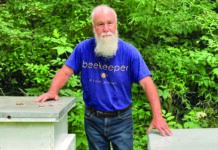The U.S. Department of Agriculture (USDA) is opening a special disaster sign-up for $6 million in additional funding through the Environmental Quality Incentives Program for producers in the Texas panhandle who have been impacted by recent wildfires. Producers must submit applications to USDA’s Natural Resources Conservation Service (NRCS) by April 8, 2024, to be considered for this funding opportunity.
“The Natural Resources Conservation Service in Texas is prepared to assist landowners with their efforts to address resource concerns caused by the recent wildfires,” said Kristy Oates, NRCS State Conservationist in Texas. “Loss of vegetation not only affects forages for livestock and wildlife habitat, but it can lead to increased soil loss due to erosion from wind and water. We know many of our Texas producers were hit hard by this disaster and we are here to help.”
Assistance includes practices aimed at replacing damaged infrastructure such as fencing and water resources, as well as management and recovery of affected lands. Eligible practices for the wildfire disaster funding include:
- Access Control
- Prescribed Grazing
- Obstruction Removal
- Emergency Animal Mortality Management
- Fence
- Water Facilities
- Pumping Plant
- Livestock Pipeline
- Range Planting
- Cover Crop
- Critical Area Planting
- Conservation Cover
- Grazing Land Mechanical Treatment
- Heavy Use Area Protection
- Mulching
- Structure for Water Control
- Pasture and Hay Planting
- Upland Wildlife Habitat Management
- Wildlife Habitat Planting
- Woody Residue Treatment
For more information about applying for EQIP assistance or help with evaluating land to address concerns following the wildfire, landowners and managers should contact their local USDA Service Center.
NRCS Assistance for Communities
NRCS also administers the Emergency Watershed Protection (EWP) program, which provides assistance to local government sponsors with the cost of addressing watershed impairments or hazards such as debris removal and streambank stabilization.
The EWP Program is a recovery effort aimed at relieving imminent hazards to life and property caused by floods, fires, windstorms and other natural disasters. All projects must have an eligible project sponsor. NRCS may bear up to 75% of the eligible construction cost of emergency measures (90% within county-wide limited-resource areas as identified by the U.S. Census data). The remaining costs must come from local sources and can be in the form of cash or in-kind services.
EWP is designed for installation of recovery measures to safeguard life and property as a result of a natural disaster. Threats that the EWP Program addresses are termed watershed impairments. These include, but are not limited to:
- Debris-clogged waterways
- Unstable streambanks
- Severe erosion jeopardizing public infrastructure
- Wind-borne debris removal.
Eligible sponsors include cities, counties, towns or any federally recognized Native American tribe or tribal organizations. Sponsors must be able to provide the local construction share, obtain permits and site access and agree to perform operations and maintenance of the constructed projects. Willing sponsors must submit a formal request (by mail or email) to the state conservationist for assistance within 60 days of the natural disaster occurrence or 60 days from the date when access to the sites become available. For more information, potential sponsors should contact their local NRCS office.
In addition to EWP, Conservation Technical Assistance is another valuable service that NRCS can provide following a wildfire. NRCS technical assistance can help fire victims with planning cost-effective post fire restoration practices.




